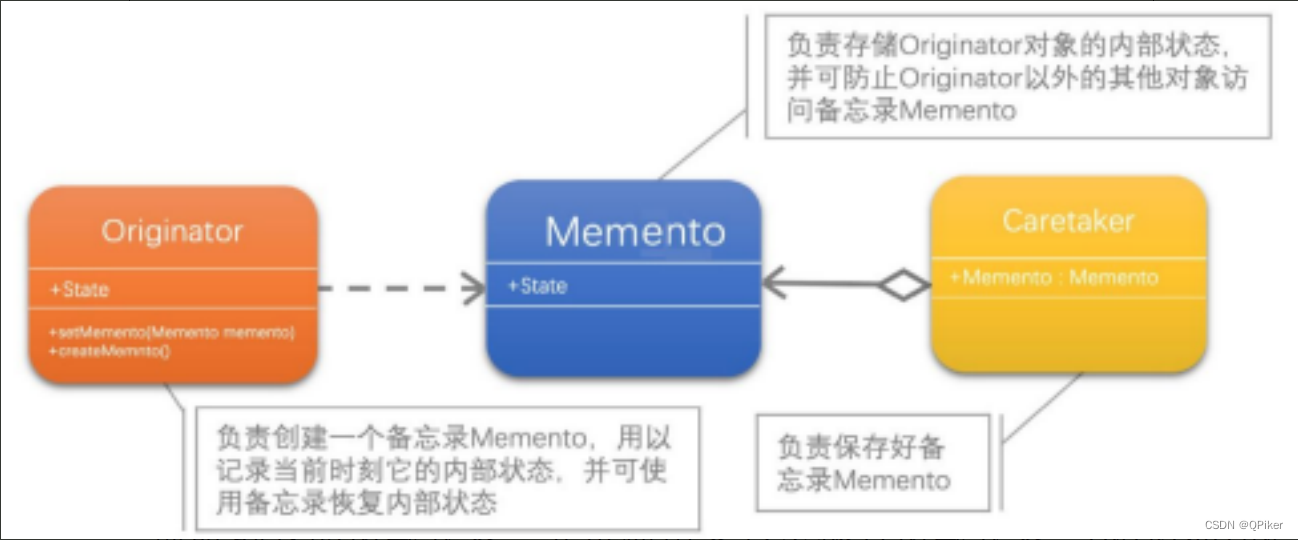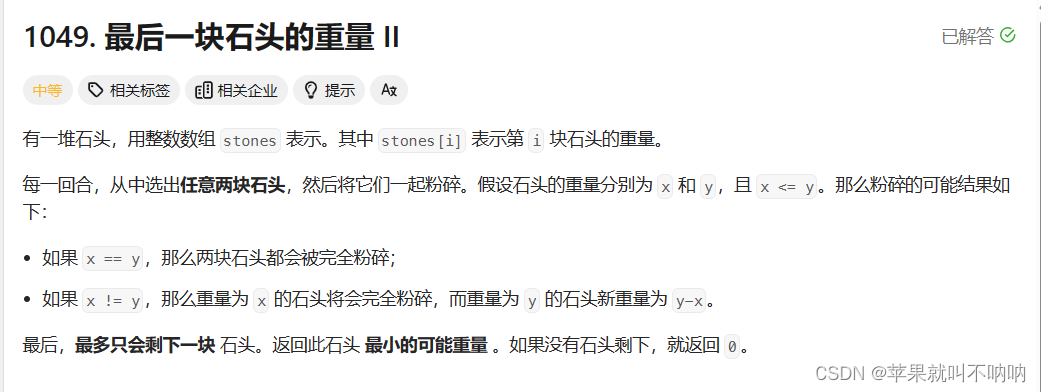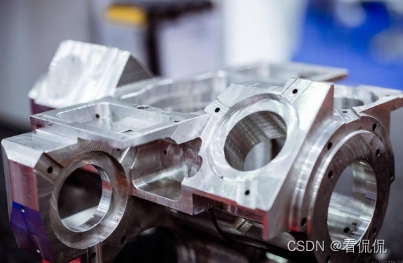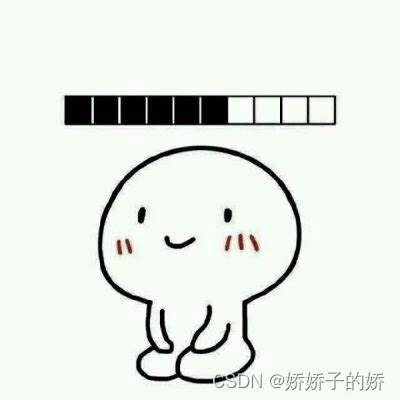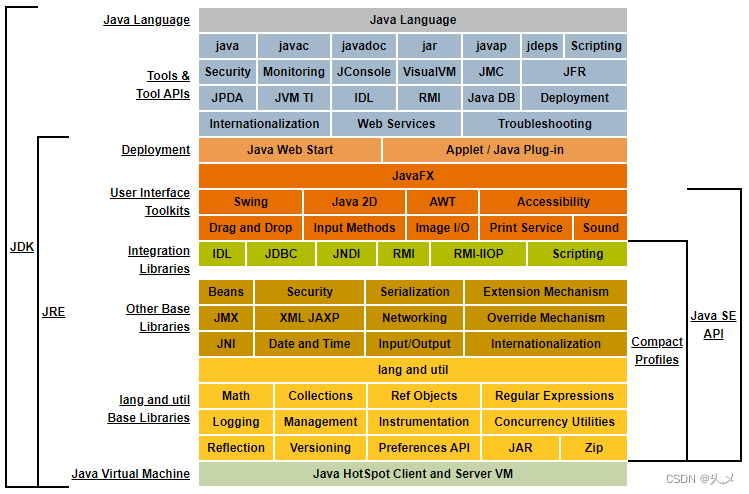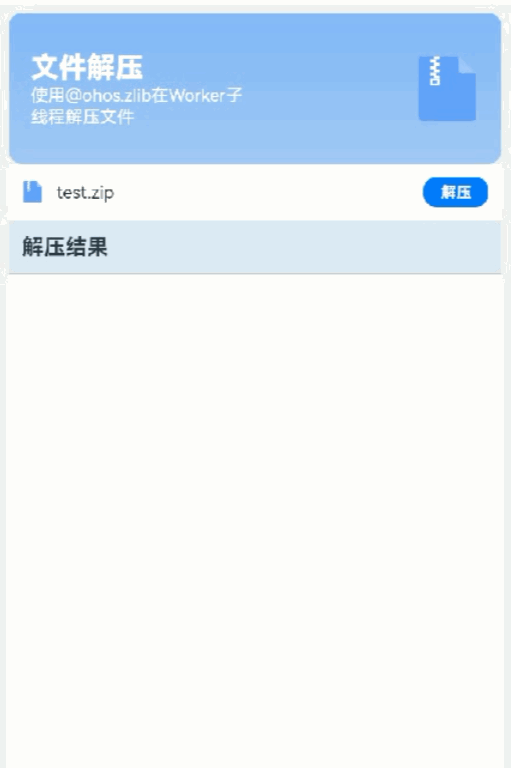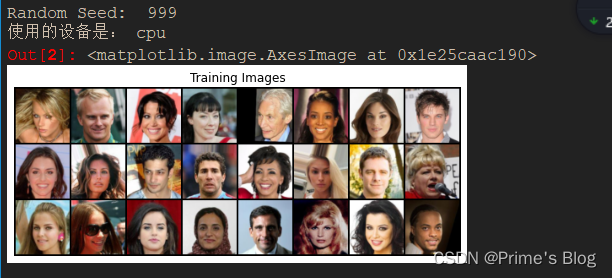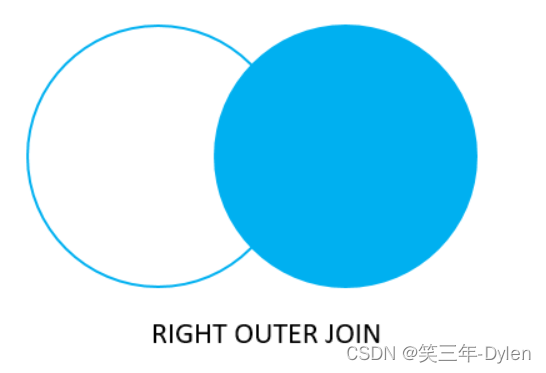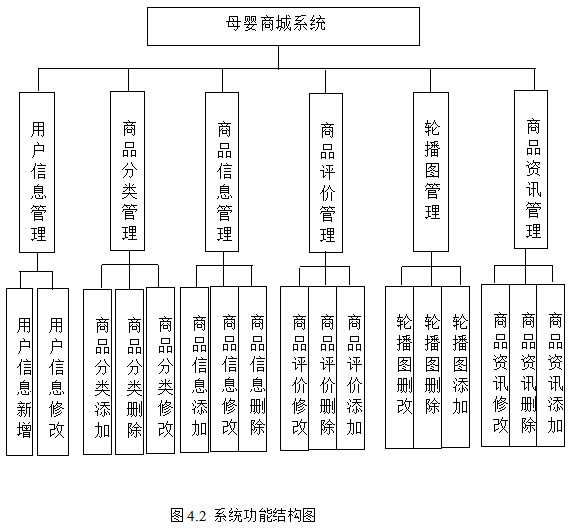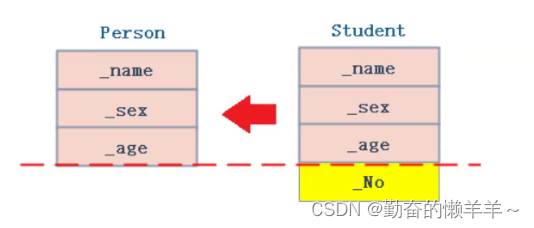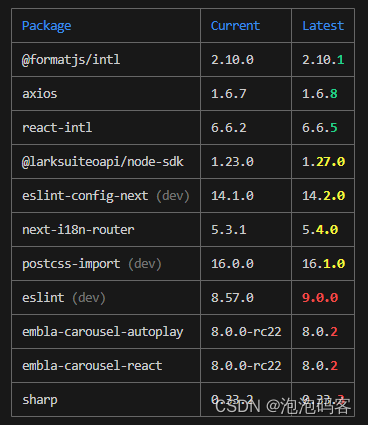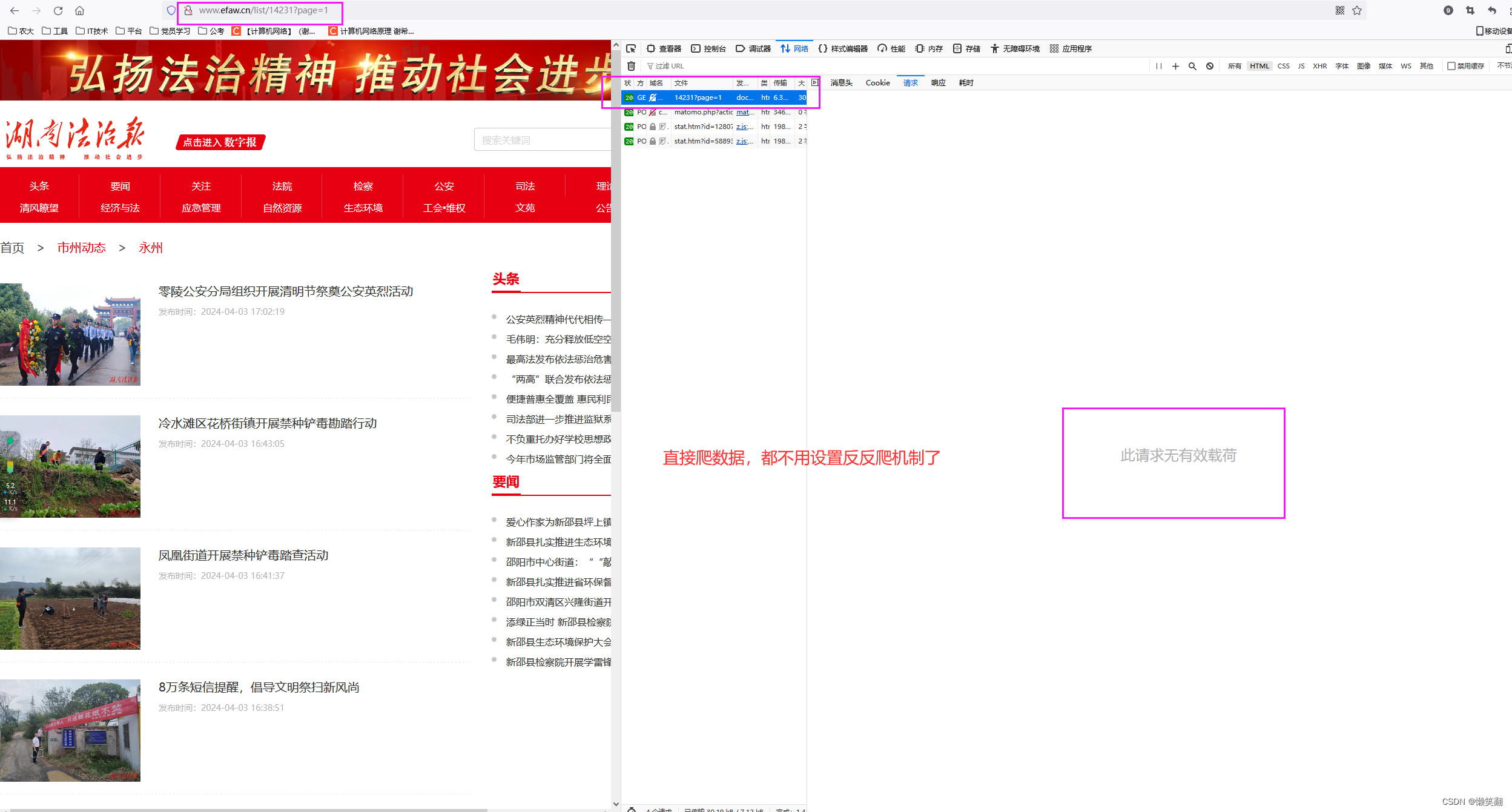备忘录模式
备忘录模式(Memento Design Pattern),也叫快照(Snapshot)模式。指在不违背封装原则前提下,捕获一个对象的内部状态,并在该对象之外保存这个状态,以便之后恢复对象为先前的状态。
备忘录模式主要包含以下几个角色:
Originator(发起人):负责创建一个备忘录Memento,用以记录当前时刻它的内部状态,并可使用备忘录恢复状态。Originator可根据需求决定Memento存储Originator的哪些内部状态。
Memento(备忘录):负责存储Originator对象的内部状态,并可防止Originator以外的其他对象访问备忘录Memento。备忘录有两个接口,Caretaker只能看到备忘录的窄接口,它只能将备忘录传递给其他对象。Originator能够看到一个宽接口,允许它访问返回到先前状态所需的所有数据。
Caretaker(管理者):负责保存好备忘录Memento,不能对备忘录的内容进行操作或检查。
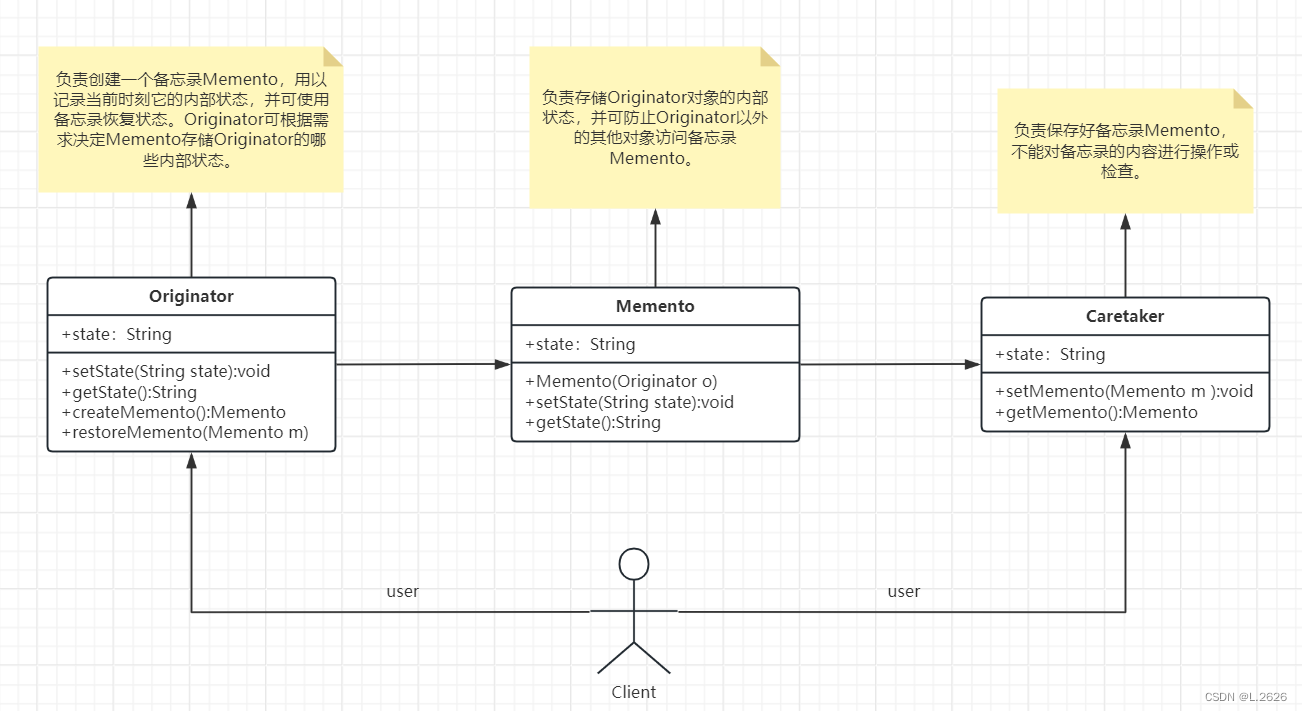
备忘录模式的实现
在利用备忘录模式时,首先应该设计一个组织者类(Originator),它是一个具体的业务类,存储当前状态。它包含备忘录对象的创建方法createMemeto()和备忘录对象恢复方restoreMemeto()。
发起人(Originator)类
public class Originator {
//需要保存的属性
private String state;
//创建备忘录,将当前需要保存的信息导入并实例化出一个Memento对象
public Memento createMemento() {
return new Memento(state);
}
//恢复备忘录,将Memento导入并将相关数据恢复
public void setMemento(Memento memento) {
this.state = memento.getState();
}
//显示数据
public void show() {
System.out.println("state = " + state);
}
public String getState() {
return state;
}
public void setState(String state) {
this.state = state;
}
}管理者(Caretaker)类
public class Caretaker {
private Memento memento;
public Memento getMemento() {
return memento;
}
public void setMemento(Memento memento) {
this.memento = memento;
}
}客户端程序
public class Client {
public static void main(String[] args) {
Originator originator = new Originator();
originator.setState("1");
originator.show();
Caretaker caretaker = new Caretaker();
caretaker.setMemento(originator.createMemento());
originator.setState("0");
originator.show();
originator.setMemento(caretaker.getMemento());
originator.show();
}
}运行结果
state = 1
state = 0
state = 1模式实现
在学习的过程发现一个很好的应用实例场景:
文章作者: leisurexi
新博客地址: https://leisurexi.github.io
实例是这样的:
实现场景:
游戏中的某个场景,一游戏角色有生命力、攻击力、防御力等数据,在打Boss前和后一定会不一样的,我们允许玩家如果感觉与Boss决斗的效果不理想可以让游戏恢复到决斗之前。
代码结构图 :

游戏角色类
public class GameRole {
private int vit; //生命力
private int atk; //攻击力
private int def; //防御力
//初始化状态
public void initState() {
this.vit = 100;
this.atk = 100;
this.def = 100;
}
//战斗
public void fight() {
this.vit = 0;
this.atk = 0;
this.def = 0;
}
//保存角色状态
public RoleStateMemento saveState() {
return new RoleStateMemento(vit, atk, def);
}
//回复角色状态
public void recoverState(RoleStateMemento roleStateMemento) {
this.vit = roleStateMemento.getVit();
this.atk = roleStateMemento.getAtk();
this.def = roleStateMemento.getDef();
}
public void stateDisplay() {
System.out.println("角色生命力:" + vit);
System.out.println("角色攻击力:" + atk);
System.out.println("角色防御力:" + def);
}
public int getVit() {
return vit;
}
public void setVit(int vit) {
this.vit = vit;
}
public int getAtk() {
return atk;
}
public void setAtk(int atk) {
this.atk = atk;
}
public int getDef() {
return def;
}
public void setDef(int def) {
this.def = def;
}
}游戏状态存储类
public class RoleStateMemento {
private int vit;
private int atk;
private int def;
public RoleStateMemento(int vit, int atk, int def) {
this.vit = vit;
this.atk = atk;
this.def = def;
}
public int getVit() {
return vit;
}
public void setVit(int vit) {
this.vit = vit;
}
public int getAtk() {
return atk;
}
public void setAtk(int atk) {
this.atk = atk;
}
public int getDef() {
return def;
}
public void setDef(int def) {
this.def = def;
}
}角色状态管理者类
public class RoleStateCaretaker {
private RoleStateMemento roleStateMemento;
public RoleStateMemento getRoleStateMemento() {
return roleStateMemento;
}
public void setRoleStateMemento(RoleStateMemento roleStateMemento) {
this.roleStateMemento = roleStateMemento;
}
}客户端程序
public class Client {
public static void main(String[] args) {
System.out.println("------------大战Boss前------------");
//大战Boss前
GameRole gameRole = new GameRole();
gameRole.initState();
gameRole.stateDisplay();
//保存进度
RoleStateCaretaker roleStateCaretaker = new RoleStateCaretaker();
roleStateCaretaker.setRoleStateMemento(gameRole.saveState());
System.out.println("------------大战Boss后------------");
//大战Boss时,损耗严重
gameRole.fight();
gameRole.stateDisplay();
System.out.println("------------恢复之前状态------------");
//恢复之前状态
gameRole.recoverState(roleStateCaretaker.getRoleStateMemento());
gameRole.stateDisplay();
}
}运行结果
------------大战Boss前------------
角色生命力:100
角色攻击力:100
角色防御力:100
------------大战Boss后------------
角色生命力:0
角色攻击力:0
角色防御力:0
------------恢复之前状态------------
角色生命力:100
角色攻击力:100
角色防御力:100
模式的优缺点
优点
- 实现了信息的封装,使得用户不需要关心状态的保存细节。
- 给用户提供了一种可以恢复状态的机制,可以使用户能够比较方便地回到某个历史的状态。
缺点
- 如果类的成员变量过多,势必会占用比较大的资源,而且每一次保存都会消耗一定的内存




